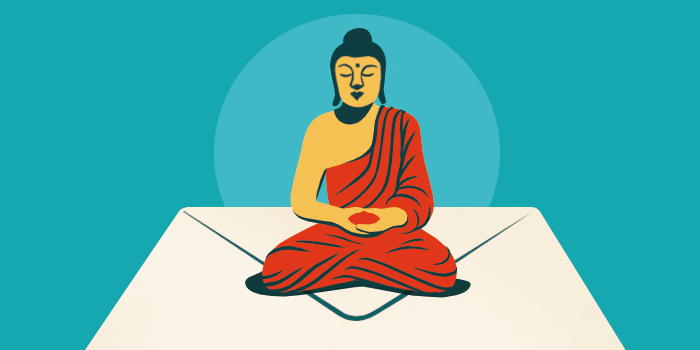Other Notable Disciples of the Buddha
The Buddha had many followers over the course of his 45-year teaching career, and quite a few were exceptional. In addition to his attendant Ananda, chief disciples Sariputra and Maudgalyayana, aunt and foster mother Mahaprajapati, and son Rahula, notable disciples included the following:
Kasyapa, often called Mahakasyapa, or Great Kasyapa, is said to have been the Buddha’s foremost disciple in both ascetic practices and meditative absorption. When he joined the sangha, he asked to trade his fine robe for the Buddha’s robe of rags. In agreeing to that, the Buddha signaled that Kasyapa was his anointed successor, and tradition has Kasyapa presiding over the First Council, where Ananda recited the sutras, and Upali, a barber from the Buddha’s hometown of Kapilavastu who was foremost in knowledge of the monastic code, recited the Vinaya (monastic rules). Mahakasyapa is a central figure in the Chan or Zen school, which regards him as the first patriarch.
Subhuti was said to be foremost in dwelling at peace in remote places and foremost in worthiness to receive gifts. Famous for his kindness and generosity, Subhuti became enlightened through the practice of maitridhyana (Pali: mettajhana), contemplation of lovingkindness. Perhaps because of his reputation for compassion, Subhuti was a favorite figure in Mahayana sutras.
Ksema was said to be first among the nuns in discernment and understanding of the dharma. She was the former wife of the king of Magadha, Bimbisara, the Buddha’s most prominent royal patron. Ksema is also known for delivering a teaching that removed the doubts of the Buddha’s other prominent royal patron, King Pasenadi of Kosala.
Utpalavarna, renowned for her beauty, was surrounded by wealthy and powerful suitors. Afraid to offend any one of them, she took up the life of a nun. She was said to possess the strongest supernatural powers of all the Buddha’s nuns.
The Buddha’s first five disciples (known collectively as the pancavargika, meaning group of five, or bhadravargiya, auspicious group) were Asvajit (who converted Sariputra), Ajnatakaundiya, Vaspa, Mahanaman, and Bhadikra. As ascetics, the five practiced extreme austerities with the Buddha before his awakening, and after his awakening the Buddha sought them out as the most likely candidates to understand his new teachings. He found them at the deer park in Sarnath, outside Varanasi. After hearing his sermons and gaining understanding, the five disciples formed the sangha.
Yasa was the Buddha’s first enlightened lay follower (upasaka) and became his sixth disciple. Born into a wealthy family, Yasa was the first sangha member who had not previously known the Buddha. When the Buddha came to Yasa’s home and delivered a teaching, Yasa’s mother Sujata became the Buddha’s first female lay disciple (upasika). Yasa is the precursor to later famous enlightened laymen such as Vimalakirti and Layman Pang.

Tricycle is more than a magazine
Gain access to the best in sprititual film, our growing collection of e-books, and monthly talks, plus our 25-year archive
Subscribe now